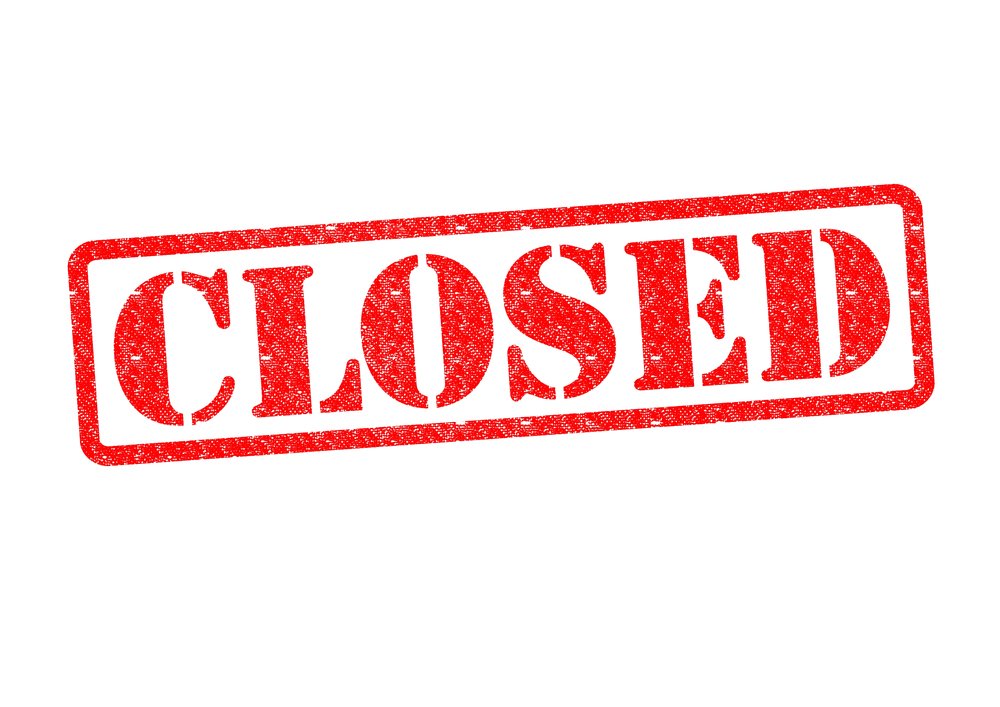Into the Shadows: The Tale of Vanished Body Armor Companies
In the ever-evolving defense industry, the rise and fall of body armor manufacturers mark a tumultuous journey of innovation, success, and sometimes, abrupt endings. As we delve into the histories of these vanished enterprises, we confront not only their legacies but also the formidable challenge of piecing together stories from the digital breadcrumbs left behind. This article sheds light on some of the examples of what can happen and where to look for support while discussing the complexities of researching entities that have faded into obscurity.
The Challenges of Digital Archaeology
The internet, a vast repository of information, can sometimes turn into a labyrinth for researchers seeking details on companies that are no longer in business. Websites go offline, domain names expire, and social media accounts become inactive, leading to dead ends that frustrate even the most seasoned investigators. This digital disappearance acts as a double-edged sword, erasing not only the company's online presence but also valuable information about their contributions and failures.
A Closer Look at the Disappearing
The demise of certain body armor companies serves as a cautionary tale for the industry and its consumers. These real-world examples highlight not just the financial and operational risks involved but also the potential safety hazards for end-users.
Company A: A Facade of Innovation
Once regarded as a leader in the body armor sector, Company A's story unraveled to reveal a troubling reality. Behind the self-proclaimed banner of pioneering lightweight armor lay a business model reliant on importing products made from cheap and unreliable materials. These products, masquerading under the guise of "USA Made" technological advancements, deceived the public and compromised safety. When the company shut its doors, customers were left with armor of questionable integrity, forcing them to seek replacements from reputable sources. Company A's downfall is a stark reminder of the importance of transparency and verifiability in product sourcing and manufacturing claims.
Company B: The Fall of a Titan
Company B was once a behemoth in the body armor industry, known for its extensive government contracts and robust product lineup. However, a series of contract failures and significant financial setbacks led to its undoing. The company's decline culminated in bankruptcy, leaving it insolvent and unable to support current and future warranty claims or address faulty products. For customers and partners, the collapse of Company B underscored the critical need for financial stability and reliability in suppliers, especially when dealing with safety-critical equipment.
Company C: Vanished Without a Trace
Operating on the fringes of the industry, Company C took a different approach by selling repackaged products from a manufacturing partner in the United States under a private label. This lack of transparency and the absence of a physical operating location meant that when the company ceased operations, customers were left in the lurch, unable to seek support or recourse for the products on which they had spent significant amounts of money. Company C's sudden disappearance highlights the risks associated with companies that rely on opaque business practices and the difficulties customers face in seeking accountability.
Navigating the Aftermath
The stories of Companies A, B, and C illustrate not just the potential for innovation and growth in the body armor industry but also the pitfalls of ethical and financial mismanagement. For consumers, these examples stress the importance of due diligence and the need to critically evaluate the claims and stability of manufacturers. As the industry moves forward, these tales serve as reminders of the value of integrity, accountability, and transparency in building trust and safety in protective equipment.
The Art of Finding the Unfindable
Researching defunct body armor companies requires a blend of detective work and patience. Here are some strategies that can help navigate these digital dead ends:
Archival Services: Websites like the Wayback Machine allow researchers to access snapshots of websites that no longer exist. This tool can be invaluable in uncovering lost information.
Industry Forums and Communities: Sometimes, the most detailed accounts come from former employees, clients, or industry enthusiasts who share their experiences and knowledge in online forums.
Patent Databases: Companies often leave a paper trail in the form of patents for their technologies. These databases can provide insights into the innovations that defined their legacy.
Academic and Government Publications: Research papers, government contract awards, and legal documents can offer glimpses into the operations and challenges faced by these companies.
IntelAlytic's The Armor List: An innovative platform that catalogs a wide range of body armor products, offering detailed information, certifications, and user reviews. This resource stands out by providing transparency and aiding in the verification of manufacturers' claims, enhancing consumer trust and safety within the body armor industry.
Unraveling the Threads: Aftermath and Accountability
When body armor companies cease operations, the ripple effects extend far beyond their immediate financial and operational circles. Customers and users of their products are often left in a precarious position, grappling with questions of warranty claims, returns, and liability for product failures. This section delves into the aftermath of such closures and offers guidance on navigating these murky waters.
Warranty and Returns: A Vanished Promise
Warranties are meant to assure customers of the quality and reliability of their purchases. However, when companies go out of business, these promises often to vanish into thin air, leaving users with little recourse for faulty or degrading equipment. In the case of body armor, this can pose significant safety risks.
Legal Recourse: In some jurisdictions, the liability for warranties may pass to the company's successors or can be claimed as part of bankruptcy proceedings. However, this process is complex and often requires legal assistance.
Secondary Market Caution: Purchasers of second-hand equipment must be especially wary, as warranties rarely transfer, and the risk of acquiring obsolete or compromised gear increases.
Liability for Failures: Who's to Blame?
Product failures can have dire consequences, particularly when it comes to protective gear. The liability for such failures becomes a tangled web when the manufacturer is no longer in existence.
Manufacturer Liability: Traditionally, the manufacturer would be liable for product failures, especially in cases of negligence. However, enforcing such liability post-closure is fraught with legal challenges.
Supplier Responsibility: In some cases, suppliers or retailers may hold partial responsibility, especially if they continue to sell stock after the manufacturer's closure.
Third-Party Certifiers: Some body armor products are certified by third-party organizations for meeting specific safety standards. If a product fails and it's discovered that it did not meet the advertised standards despite certification, these certifying bodies may also face legal scrutiny regarding their role in validating the defective products.
Government Contracts and Accountability: When body armor is procured under government contracts, the procurement agencies might also face questions about due diligence and accountability. If it's found that the agency failed to adequately vet the manufacturer or ignored known issues, they could be held partially responsible for the consequences of product failures.
End-User Modifications: In certain situations, the end-users, such as law enforcement agencies or individual officers, might modify the body armor for comfort or additional functionality. If a failure occurs and it can be linked back to these modifications, liability may shift, at least in part, to the end-user for altering the product beyond its original specifications and safety certifications.
Seeking Help: Navigating a Company's Absence
For users facing product failures or seeking recourse for warranty claims from defunct companies, the path forward is daunting but not entirely bleak. Here are some strategies:
Consumer Protection Agencies: These organizations can offer advice and support in pursuing claims against defunct companies or identifying legal pathways for recourse. Examples include the Federal Trade Commission (FTC) and state-level consumer protection offices.
Industry Associations: Bodies governing the body armor and defense industry, such as the National Institute of Justice (NIJ), provide mediation services or help in finding alternative solutions. The NIJ sets standards for body armor and can offer guidance on compliance and safety standards.
Legal Advice: Consulting with a lawyer knowledgeable in consumer protection law or specialized in defense industry regulations can provide clarity on one's rights and potential actions. This may include pursuing litigation or joining class action lawsuits against defunct manufacturers.
Community Support: Online forums and communities related to law enforcement and protective gear often share collective knowledge and experiences that can guide affected individuals. Websites and forums dedicated to law enforcement officers, military personnel, and security professionals can be particularly useful.
Department of Justice (DOJ) and Department of Homeland Security (DHS) Investigations: For issues related to fraudulent claims or safety standards, reporting to the DOJ or DHS can initiate investigations into the practices of defunct companies. These departments are interested in maintaining the integrity of safety equipment used by law enforcement and security personnel.
National Institute of Justice (NIJ): The NIJ, as part of the DOJ, offers resources and information on body armor standards and testing. They can provide assistance or direct individuals to appropriate channels for concerns related to body armor performance and safety.
Direct Contact with Regulatory Bodies: In cases where safety is a concern, directly contacting regulatory bodies such as the Department of Homeland Security (DHS) for products intended for use in homeland security roles, or other relevant authorities, can sometimes facilitate a more immediate review of product safety and standards compliance.
By leveraging these resources, individuals affected by the closure of body armor companies can navigate the challenges of seeking recourse for faulty products or warranty issues. These avenues also underscore the importance of regulatory and community support in maintaining high standards of safety and accountability within the industry.
The Echoes of Dissolved Promises
The dissolution of body armor companies leaves a complex legacy of innovation shadowed by the practical realities of unresolved warranties, product liabilities, and the quest for recourse. For those navigating the aftermath, the journey is fraught with legal, financial, and ethical challenges. Yet, by leveraging available resources and community support, individuals can find pathways through the uncertainty. This narrative serves as a reminder of the importance of due diligence, the critical examination of warranties and claims, and the importance of fostering a resilient and informed community ready to support each other in times of need.
As we document the rise and fall of these companies, let us not forget the lessons learned from their passage. The industry must strive for transparency, accountability, and support to ensure that the protective promise of body armor remains unbroken, regardless of the company's fate.
The Importance of Preserving History
The disappearance of body armor companies serves as a reminder of the transient nature of the defense industry. However, it also highlights the importance of preserving history, not just in museums and books, but in the digital realm as well. As researchers, it's our responsibility to piece together these lost stories, ensuring that the lessons and legacies of these companies continue to inform and inspire future generations.
Navigating the digital remains of vanished companies is more than just a challenge; it's a journey into the heart of an industry that constantly balances on the edge of innovation and oblivion. In doing so, we keep alive the memory of those who sought to make a difference, one layer of armor at a time
The Armor List: A Beacon of Transparency
In stark contrast to the cautionary tales of Companies A, B, and C, IntelAlytic's The Armor List emerges as a pioneering initiative aimed at enhancing industry transparency and accountability. This digital platform serves as a comprehensive database, cataloging body armor products and their manufacturers, complete with detailed analyses, certifications, and user reviews.
The Power of Information
The Armor List exemplifies how technology can be leveraged to empower consumers and institutions alike, offering a reliable resource for vetting body armor's safety and efficacy. By aggregating data from academic and government publications, including research papers, government contract awards, and legal documents, The Armor List provides an unprecedented level of insight into the operations and challenges faced by body armor companies.
Bridging the Gap
For industry stakeholders, The Armor List acts as a critical bridge between manufacturers and end-users, ensuring that claims of safety and performance are substantiated by verifiable evidence. This platform not only aids in navigating the complexities of product selection but also holds manufacturers accountable, encouraging a culture of excellence and integrity within the industry.
A Model for the Future
IntelAlytic's The Armor List represents a significant step forward in addressing the issues of transparency and accountability that have plagued the body armor industry. By providing a centralized, accessible, and reliable source of information, The Armor List sets a new standard for how companies should engage with their customers and the broader community. It is a testament to the role of innovation in fostering safety and trust, serving as a model for future endeavors aimed at improving industry standards and consumer protection.
Learn More
Learn more about The Armor List
Explore IntelAlytic Services
Follow us on LinkedIn for daily tips and resources





